News

Feb. 10, 2023
#IAmScience Roberto Nascimento
By Sarah Kiefer | Bond LSC Roberto Nascimento believes a personal touch led him to where he is today. Nascimento found it essential to reach out via email to the programs where he might land, which is something many of his peers questioned. But, Nascimento saw it very clearly. “If you don’t try, you already have the no. If you take a chance, you might get it. It’s always worth trying,” Nascimento said. One of those emails and a desire to combine new skills with his previous experience in mass spectrometry led him to become a…
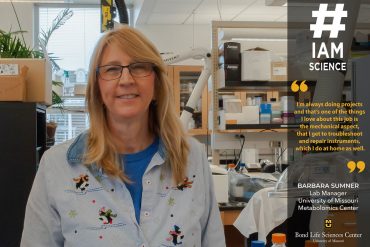
Feb. 3, 2023
#IAmScience Barbara Sumner
By Sarah Kiefer | Bond LSC Barbara Sumner grew up in Houston, Texas, and discovered her enthusiasm for chemistry in high school, captivated by how chemical processes can explain how things work in our everyday lives. “It was a subject that I just really loved,” Sumner stated. Sumner originally pursued chemical engineering in college, which she thought she would love because of how much she liked piecing things back together or fixing problems that arise in an experiment. But after deciding she enjoyed learning about the detailed understanding provided by the fundamental chemistry more than…
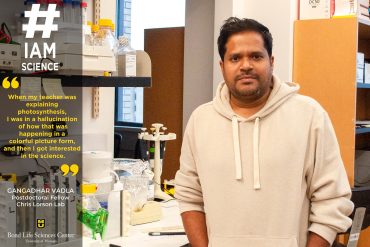
Jan. 27, 2023
#IAmScience Gangadhar Vadla
By Sarah Kiefer | Bond LSC Sunlight is where it starts for a daffodil. As rays cascade upon the plant, photosynthesis begins and this carbon dioxide and oxygen exchange gives the flower what it needs to survive. For Gangadhar Vadla, he drew a picture of this vibrant process in his head in high school. “When my teacher was explaining photosynthesis I was in a hallucination of how that was happening in a colorful picture form, and that’s how I got interested in the science,” Vadla said. Vadla’s passion for processes that fuel our planet’s…

Dec. 16, 2022
Competing signals: scientists explore how iron sensing and plant immune signaling interact with $1.2 million NSF grant
Bond LSC researchers Scott Peck (right) and David Mendoza (left) collaborate with MU biochemist Antje Heese in a new $1.2 million NSF grant. By Josie Heimsoth, Bond LSC Plants must integrate many environmental signals to successfully grow and reproduce. Three researchers at MU have recently discovered a new connection between some of these signals that recently led to a $1.2 million National Science Foundation (NSF) grant that may lead to improvements in both plant immunity and plant nutrition. Lead researcher Scott Peck has studied how plants respond to changes in their environment…

Dec. 9, 2022
#IAmScience Longfei Wang
By Sarah Kiefer | Bond LSC Longfei Wang, like many, was in high school when he realized for the first time what he wanted to be when he grew up. In his case, it happened to be choosing the path of a biologist. His fascination with a well-known fundamental biological structure was the main factor in his decision. “I was thinking the DNA double helix looks awesome,” Wang said. “This structure is identical for everyone, but each person is unique, at both [a] physical and mental level, which indicates how miraculous this…
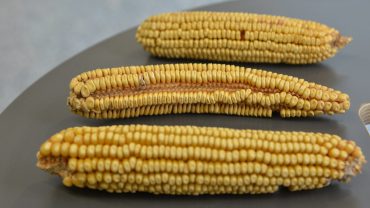
Dec. 2, 2022
Understanding grass diversity: the key to increase crop yields
The mutant corn ear in the middle makes kernels in single rows rather than paired rows. The McSteen lab studies kernel development in this grass crop to one day help improve crop yields. | photo by Kristina Abovyan, Bond LSC by Kristina Abovyan, Bond LSC You might look at your yard and not think much of grass, but the family of narrow-leafed plants spans 12,000 species and a world of diversity from the grasslands of the Serengeti to the corn fields of the Midwest. “They are incredible; they are all over the world and do all kinds…
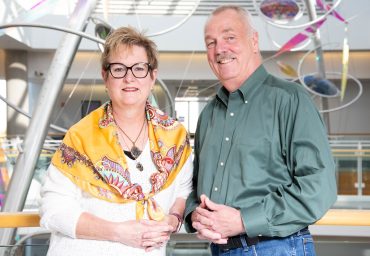
Nov. 4, 2022
Complementary Crafts: New Bond LSC investigators bring dual microbiology projects to the center
By Cara Penquite | Bond LSC Wendy and Bill Picking tackle a stomach-churning area of science. Fascinated by the bacterium responsible for bacillary dysentery, Bill studies its structure and function, while Wendy aims to use information on that same bacterium for healing. “I do the vaccine stuff, but he’s a protein chemist. So the proteins are what keep us together,” Wendy said. As two of Bond LSC’s newest investigators, the couple brings pathogenic microbiology expertise to the center. Their hiring is part of MizzouForward, an investment that aims to elevate and promote the University of…

Oct. 11, 2022
Mendoza lab receives $200,000 Pew Charitable Trusts grant for plant microbe nutrition collaboration
Pew Charitable Trusts may be best known for its non-partisan think tank subsidiary that focuses on demographic and social science issues, but its mission to improve public policy and inform bleeds over into support for science. David Mendoza — a Bond Life Sciences Center principal investigator and associate professor of plant sciences in the College of Agriculture, Food and Natural Resources — received a $200,000 grant for biomedical sciences from the Pew Charitable Trusts. “To have people you need plants, so if we manage to engineer better and more nutritious plants, the chances of improving…

Sep. 30, 2022
#IAmScience: Jaime Barros-Rios
By Cara Penquite | Bond LSC When Jaime Barros-Rios explains his work to others, he says he studies how plants make wood. All plants — from oaks down to daffodils and clovers — do, in fact, make wood …. or at least components of it. That component is lignin, a functional unit of plant cell walls and wood. Barros-Rios studies it as he learns the ins and outs of research at Bond LSC in hopes of potentially holding a faculty position at MU as part of the Preparing Future Faculty – Faculty Diversity (PFFFD) postdoctoral program.

Sep. 15, 2022
Becoming distinguished: Mittler awarded Board of Curators’ academic honor
By Roger Meissen | Bond LSC Bond Life Sciences Center’s Ron Mittler was recently named Curators’ Distinguished Professor by the University of Missouri System Board of Curators. This top honor is bestowed on professors for outstanding scholarship who have established substantial reputations within their field. “I am honored. Mizzou is such an amazing, supportive, and collaborative research environment and I feel lucky being here,” Mittler said. “I enjoy every moment working at Bond LSC.” Mittler’s research substantially focuses on the role reactive oxygen species (ROS) play in the regulation of different biological processes. While ROS can be…
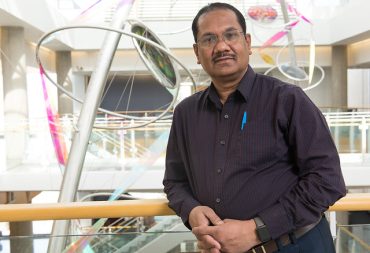
Sep. 13, 2022
Structural change: Singh moves into Bond LSC Investigator role with focus on drug and cellular interactions
By Cara Penquite | Bond LSC Kamlendra Singh sat down in his fourth floor office as a Bond LSC Investigator for the first time on September first after nearly 14 years at the Bond Life Sciences Center studying HIV, COVID-19 and how the right molecule can interact to fight disease. Designer compounds are Singh’s specialty, and as a new principal investigator he directs four projects on microscopic treatments for various diseases. He will also continue his work as Molecular Interactions Core Director alongside his new role. “Everyone [in the center] is such a tight community…

Aug. 26, 2022
#IAmScience: Negin Manshour
Negin Manshour first stepped into biology research as an engineering student using robotic algorithms to simulate proteins. When she left academia for her nine-year career developing elevator systems, her fascination with biology never faded. “I always had it in my mind that I wanted to work with proteins or biological concepts,” Manshour said. Manshour, a second year Ph.D. student in the Dong Xu lab at Bond LSC investigates formation and structures of certain molecules. She uses machine learning to design peptides, small chains of amino acids which combine into proteins – building blocks for cells –…